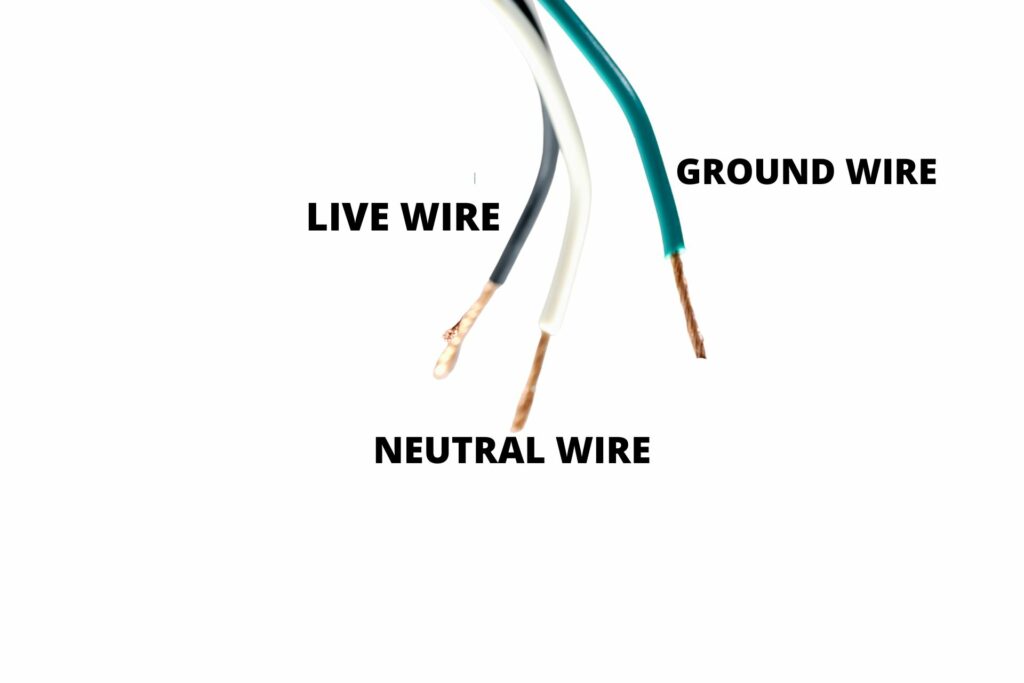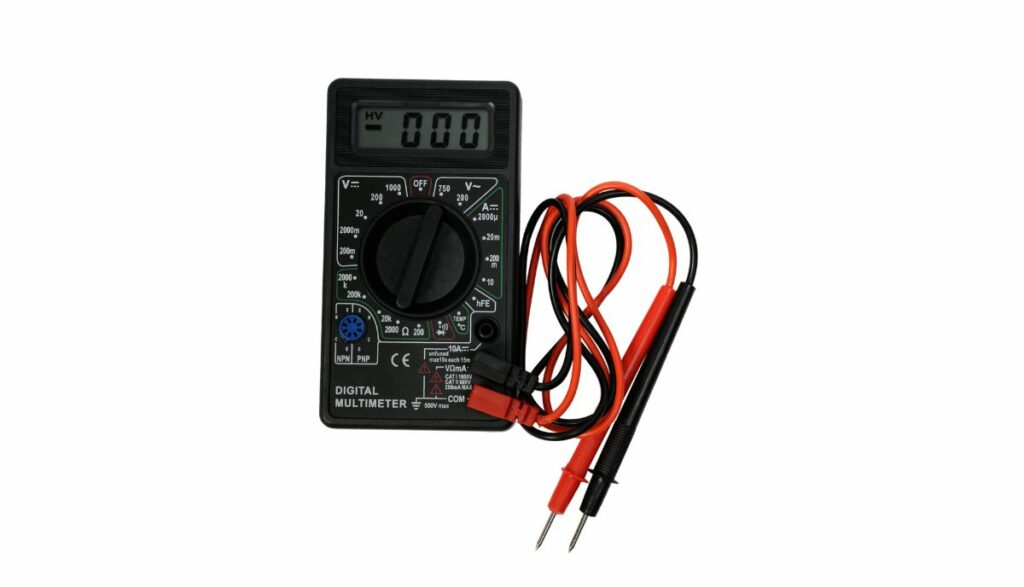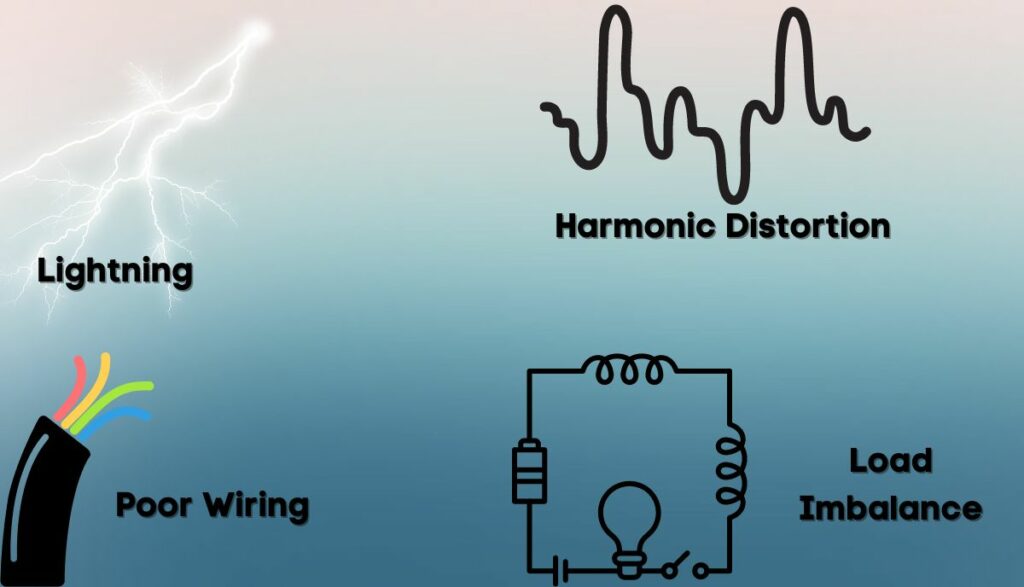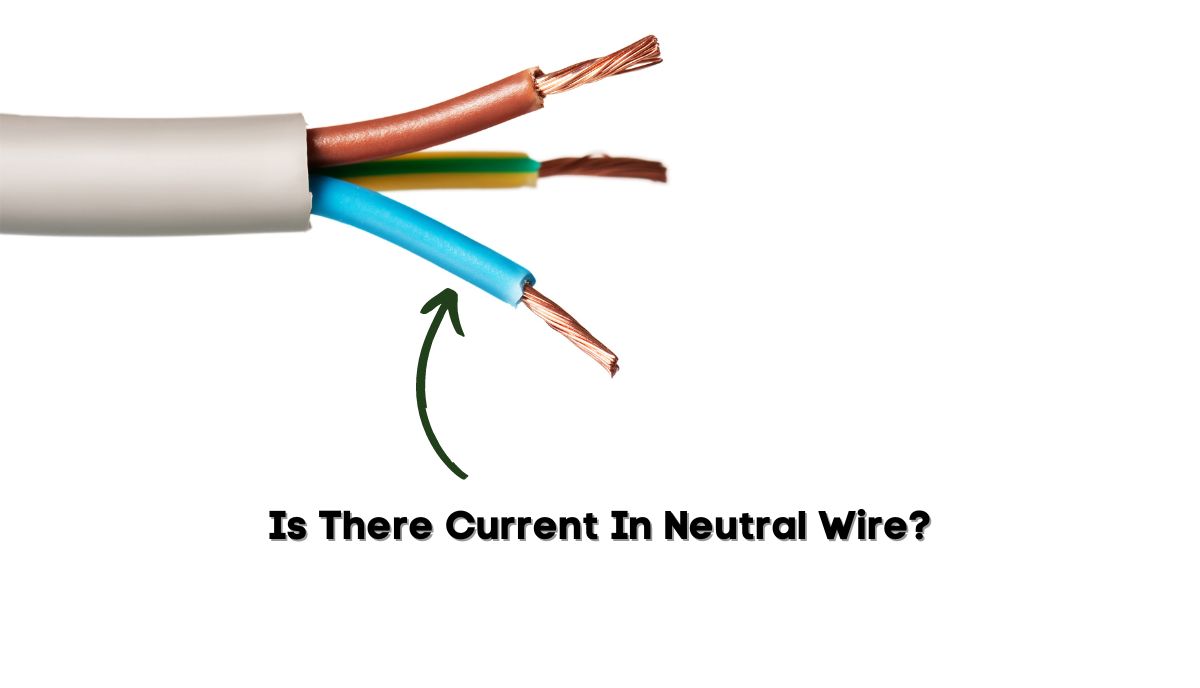The circuit cannot work without a neutral wire. But does that mean the neutral line has a current? How can you measure it? Is it dangerous? The guide below will tell you.
Is There Current In Neutral Wire?
A negligible amount of power will move through the neutral wire once you add phase currents. But it doesn’t pose the same threat as the current in a neutral that doesn’t connect to the ground. The neutral can also carry a current in three-phase linear circuits where the loads on each phase vary.
Circuits consist of a hot, neutral, and ground wire. Laypeople confuse them all the time, which is dangerous because that confusion may lead to a fire or electrocution if you wire your circuit poorly. This is what you should know:

- Hot
The hot wire brings the current to the appliance. The appliance will not run without the hot wire because it cannot reach the main panel to access your circuit’s power.
- Neutral
Electricity is not a consumable item. An appliance, such as a washing machine, won’t eat the current the way a human drinks water. The current will stop at the load long enough to operate the device before returning to the main panel.
The neutral provides that return path to the panel. This creates an endless loop. According to Sollatek, a circuit without a neutral line is dangerous. A broken neutral line can wreak havoc by exposing the load to excess voltage.
It may also encourage the current to travel down the wrong path, including the ground wire and any conductive materials it encounters.
- Ground
The ground prevents surges and short circuits from harming you or your equipment by sending unstable currents to the earth.
- Neutral VS Hot
These two wires are intimately connected because the current travels through the hot wire to the load before returning to the source via the neutral; in other words, the hot and neutral cables transmit the same current.
If the hot wire sends 40 amps to an appliance, the neutral will send 40 amps back to the panel. Panels have protections that trip when they detect an imbalance between the two. But you can see why some people confuse them.
Hot wire is red or black casing, neutral is white and the ground is green. However, color codes can change depending on the country.
- Neutral VS Ground
America’s National Electrical Code uses the term ‘Grounded’ conductor when it refers to the neutral wire, hence the confusion. These wires perform different roles. The neutral returns the current to the source while the ground takes the excess current to the earth. Many people believe that neutral and ground wires are equally harmless because they have zero potential. But that is not necessarily true, at least not in every situation.
How Can I Measure The Current In The Neutral Wire Of My Electrical System?

You use a digital multimeter to identify the neutral wire. This involves placing the black probe on a metal surface (to create a ground connection) and the red probe on one of the wires. A neutral line will generate a 0V reading.
But what about measuring the current? An AC clamp meter will perform this task. Snap the jaws of the meter around the neutral wire and record the readings.
Can Current In The Neutral Wire Affect The Performance Of Electrical Appliances?
The neutral is more likely to affect the appliance when it breaks. Without a return path for the current, The Local Electrician expects the current in the circuit to climb to unsafe levels. The voltage that typically exits through the neutral will find other outlets.
Your electrical equipment could overheat. In the worst-case scenario, a spark will start a fire. You can run an appliance in the absence of a neutral if you ground the voltage source. But this practice is dangerous. You risk losing your life and equipment.
If you’re doing renovations in your home, and you can’t find a neutral wire, hire an electrician to troubleshoot the situation and install one although rewiring an electrical system is expensive.
Are There Specific Conditions Or Faults That Can Lead To Excessive Current In The Neutral Wire?
Excess current (higher than usual) in the neutral wire is a cause for concern. You can blame the phenomenon on one or more of the following:

1). Lightning
Lightning is incredibly powerful. According to the National Oceanic And Atmospheric Administration, a lightning flash has an estimated 30,000 amps and 300 million volts. Compare that to the 15 amps and 120 volts in an American home. A lightning strike will send a surge of energy through your circuit, overwhelming your electrical system. In such cases, excess current in the neutral is the least of your concerns.
2). Poor Wiring
Who wired your home? Poor connections can burden the neutral line with more current than it usually tolerates. Your biggest worry is a neutral bonded to the live wire. Expect a lot of sparks to fly in the resulting short circuit. If you’re lucky, the breaker will do its job and trip. If it doesn’t, a fire may start.
3). Load Imbalance
Tyco Electronics Energy Division expects to record the same volume of current in the phases of a three-phase system. You will detect a current in the neutral line, but only a tiny amount because the system is balanced.
An imbalance will burden the neutral line with more current than it usually carries. The more balanced the system, the less current a neutral will hold. Load shifts and turning a diversity of loads on and off simultaneously can create imbalances that increase the neutral current.
4). Harmonic Distortion
Zero sequence harmonics can contribute to high neutral currents. This can happen even though the loads are perfectly balanced.
How Can I troubleshoot Or Address Issues Related To Current In The Neutral Wire?
Bhupendra Desai from the Indian Institute of Technology Roorkee warns against high neutral currents because they can cause blackouts and damage appliances. Therefore, you should address this issue as quickly as possible:
- You can eliminate unbalanced loads by powering each load from an appropriate phase. If you don’t have the technical skills, hire an expert to rewire and relocate the relevant loads.
- Remove shared neutrals from systems where a distorted current keeps causing high neutral currents. You can also oversize the neutral wire to prevent overheating in situations where you can’t eliminate shared neutrals.
- Add a passive filter to reduce distortions.
- An active filter will achieve a similar objective. It reduces harmonic currents. This option is expensive and more challenging to implement. But it is superior to an active filter.
- In three-phase systems, contractors use delta-wye transformers to combat zero sequence harmonics.
- An alternative option is zigzag transformers. They solve the zero sequence harmonics problem without changing the system type.
- If you suspect poor wiring, hire an electrician to inspect your electrical system for mistakes. They can install missing neutrals and fix broken wires.
- Use whole-house surge protectors to defend against lightning strikes.
Conclusion
Practically speaking, the neutral is the return path for the current a hot wire carries to the load. Therefore, it holds a current when you attach a load. The 10 amps running from the main panel through the hot wire to a toaster will flow through the neutral wire to the main panel in an infinite loop. A higher-than-usual current in the neutral is a problem because it points to a bigger problem.

